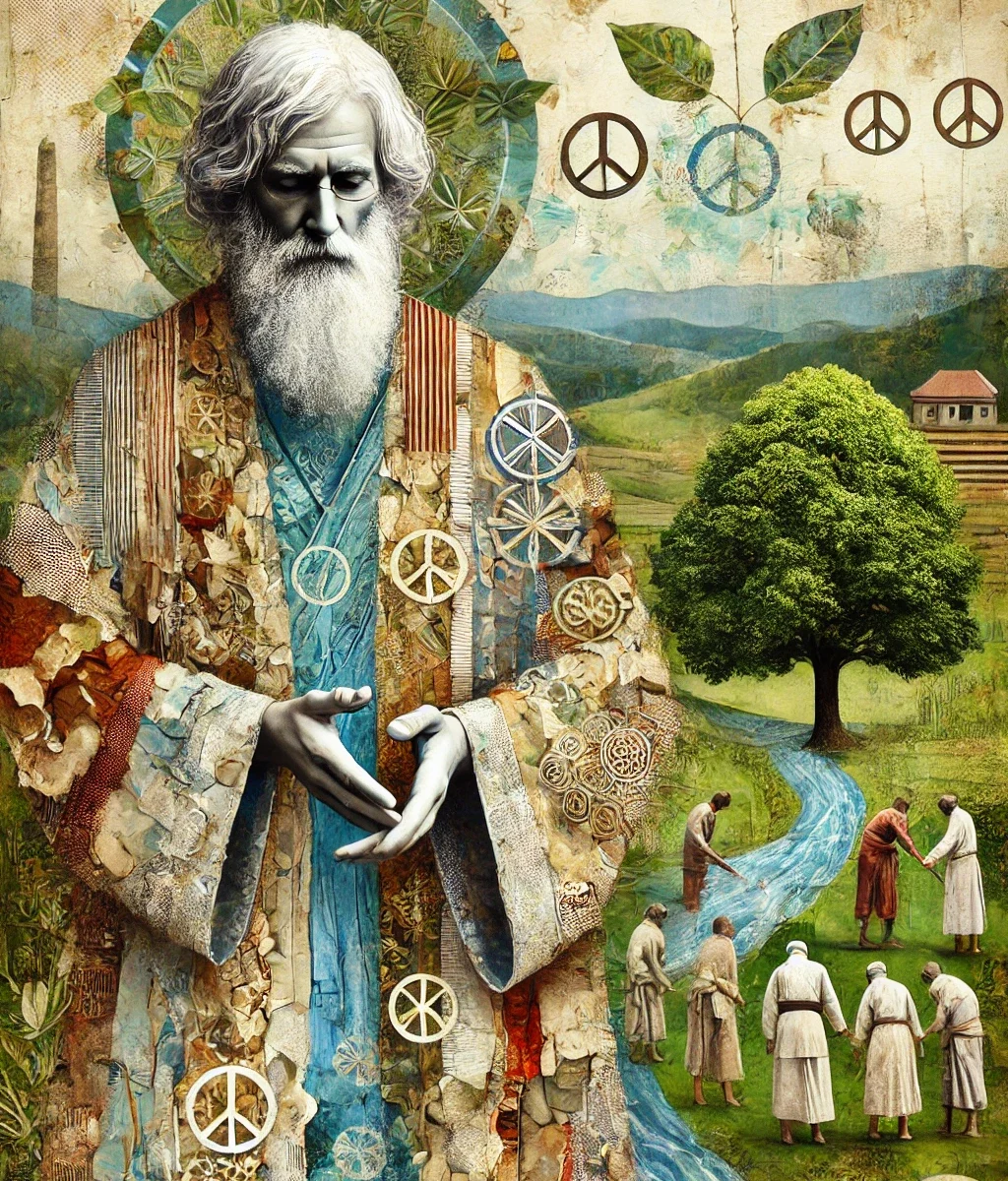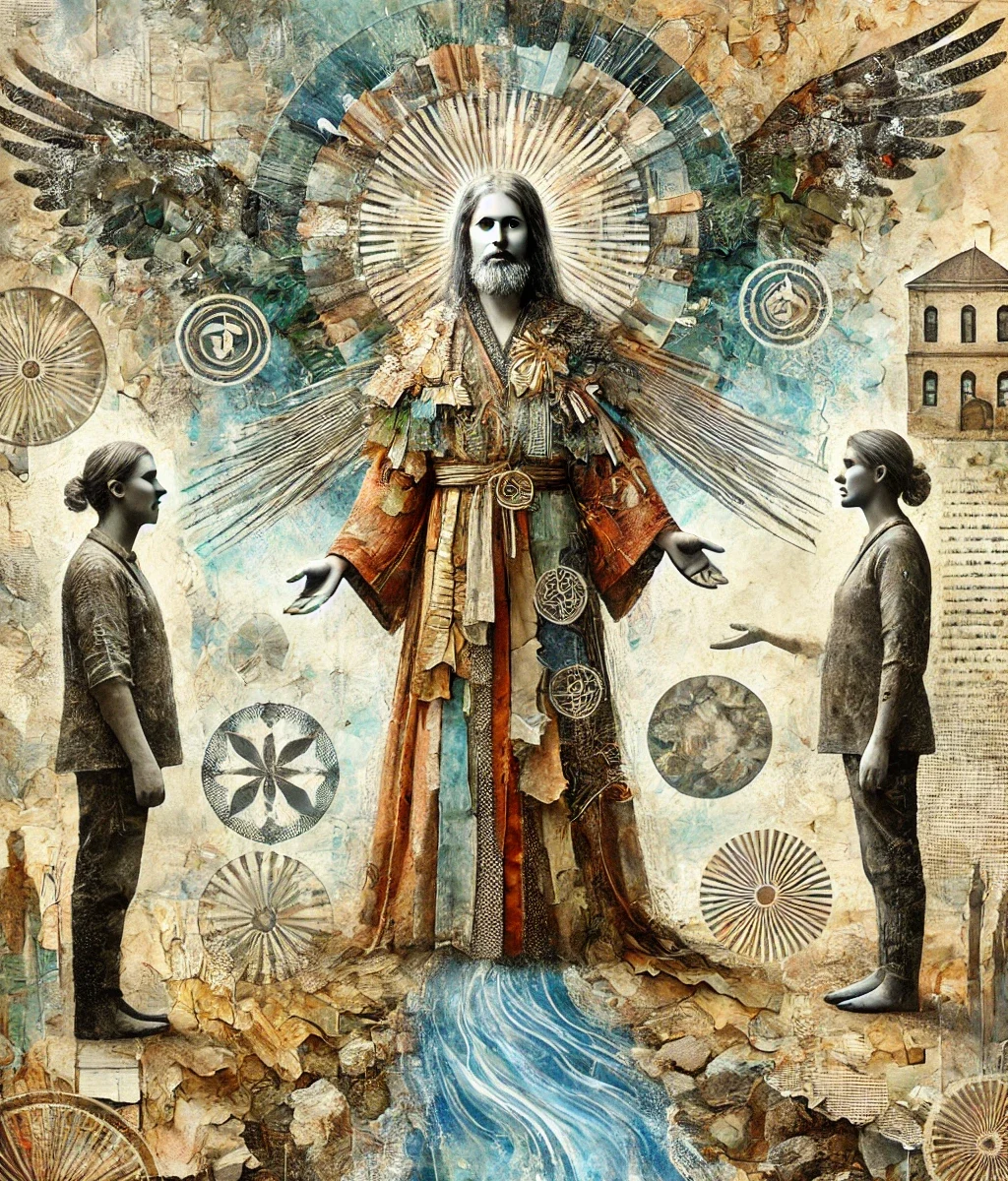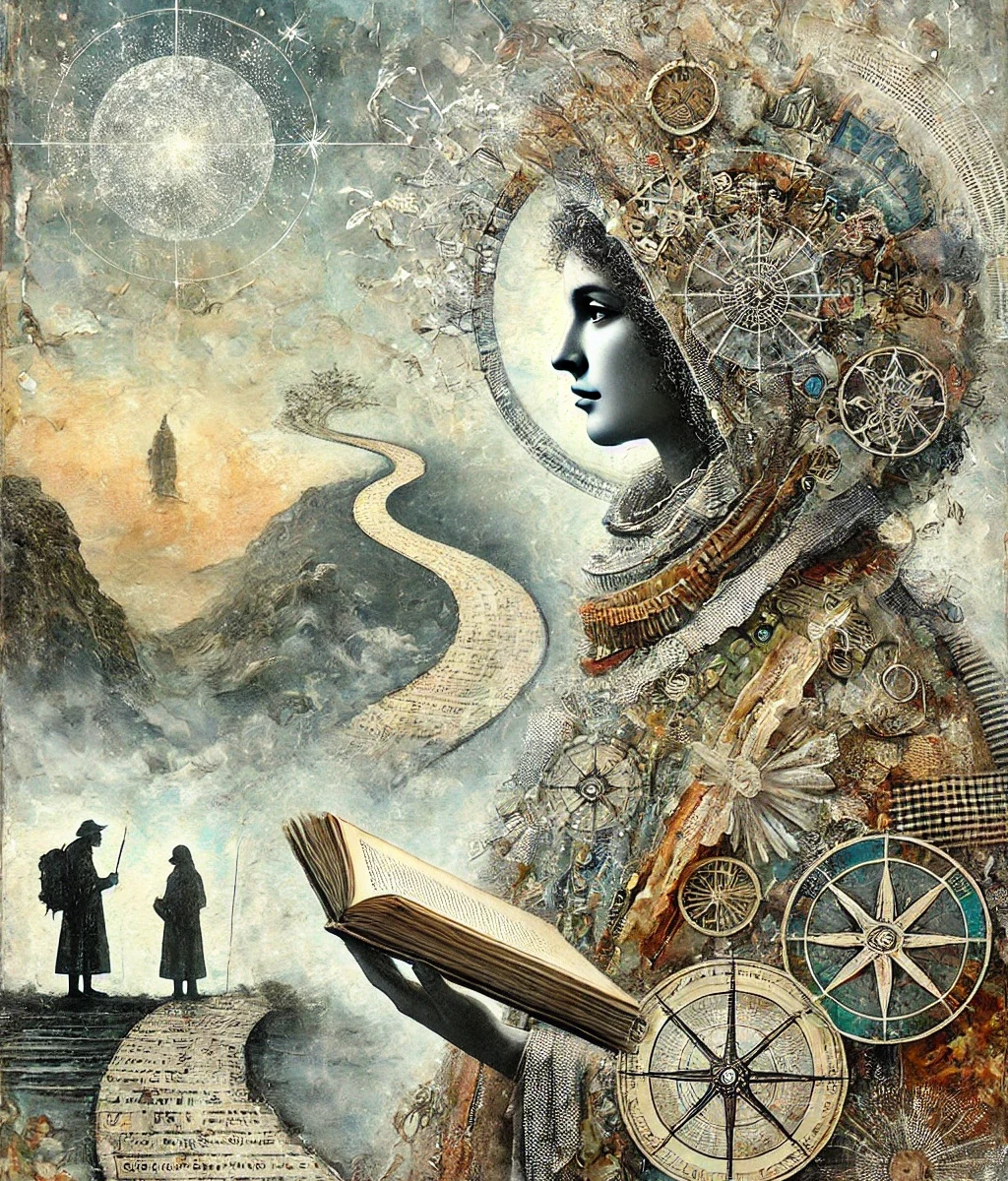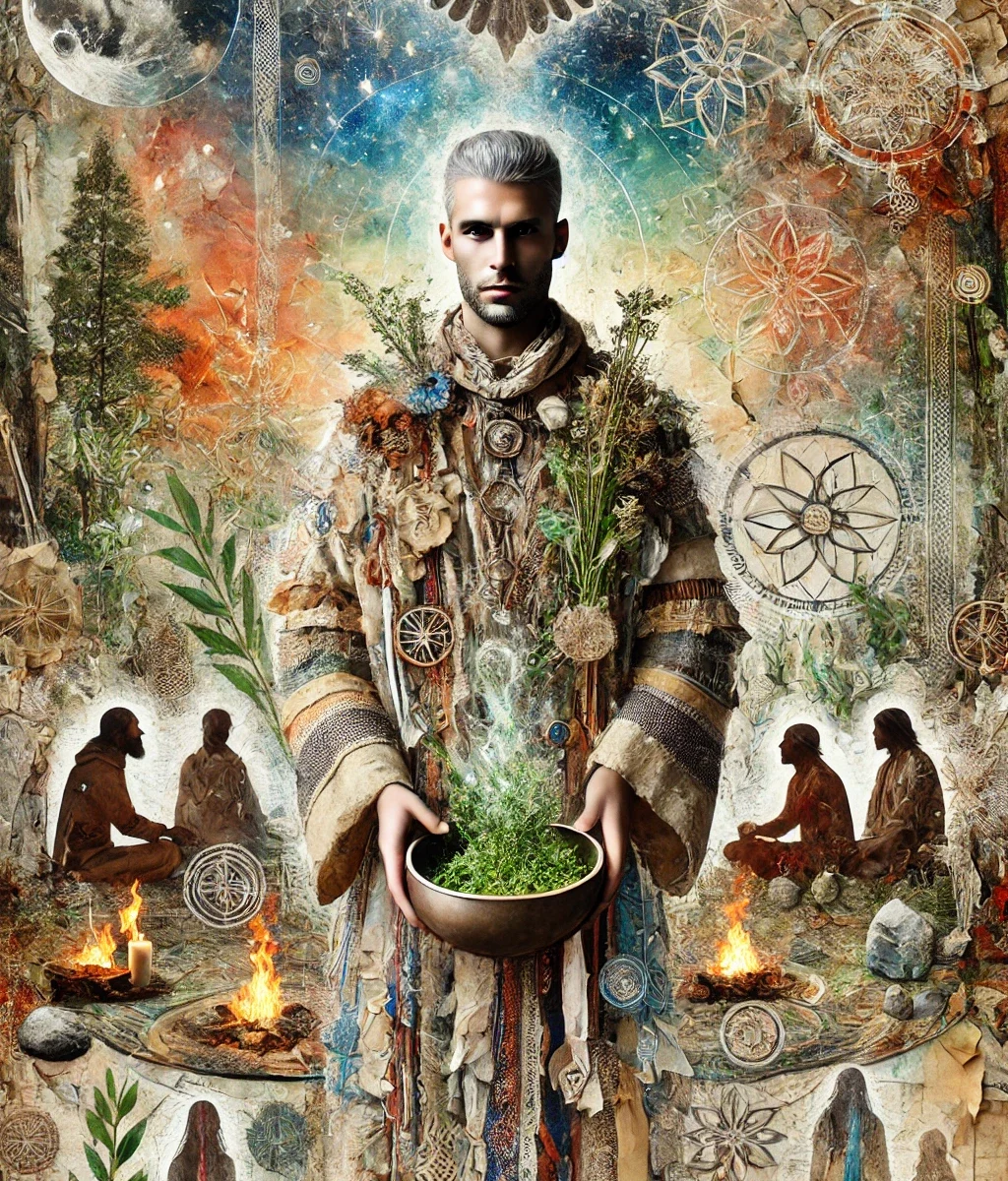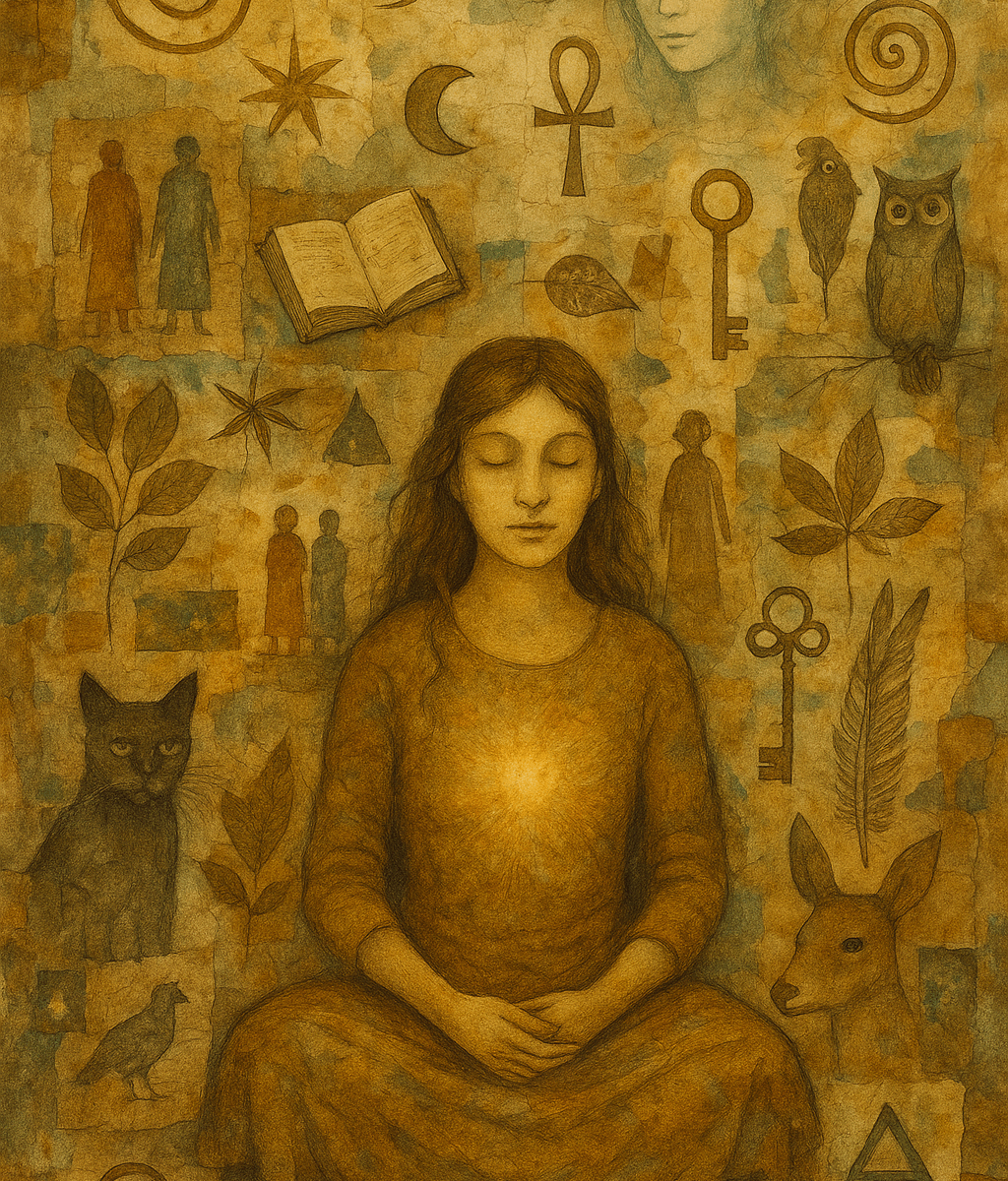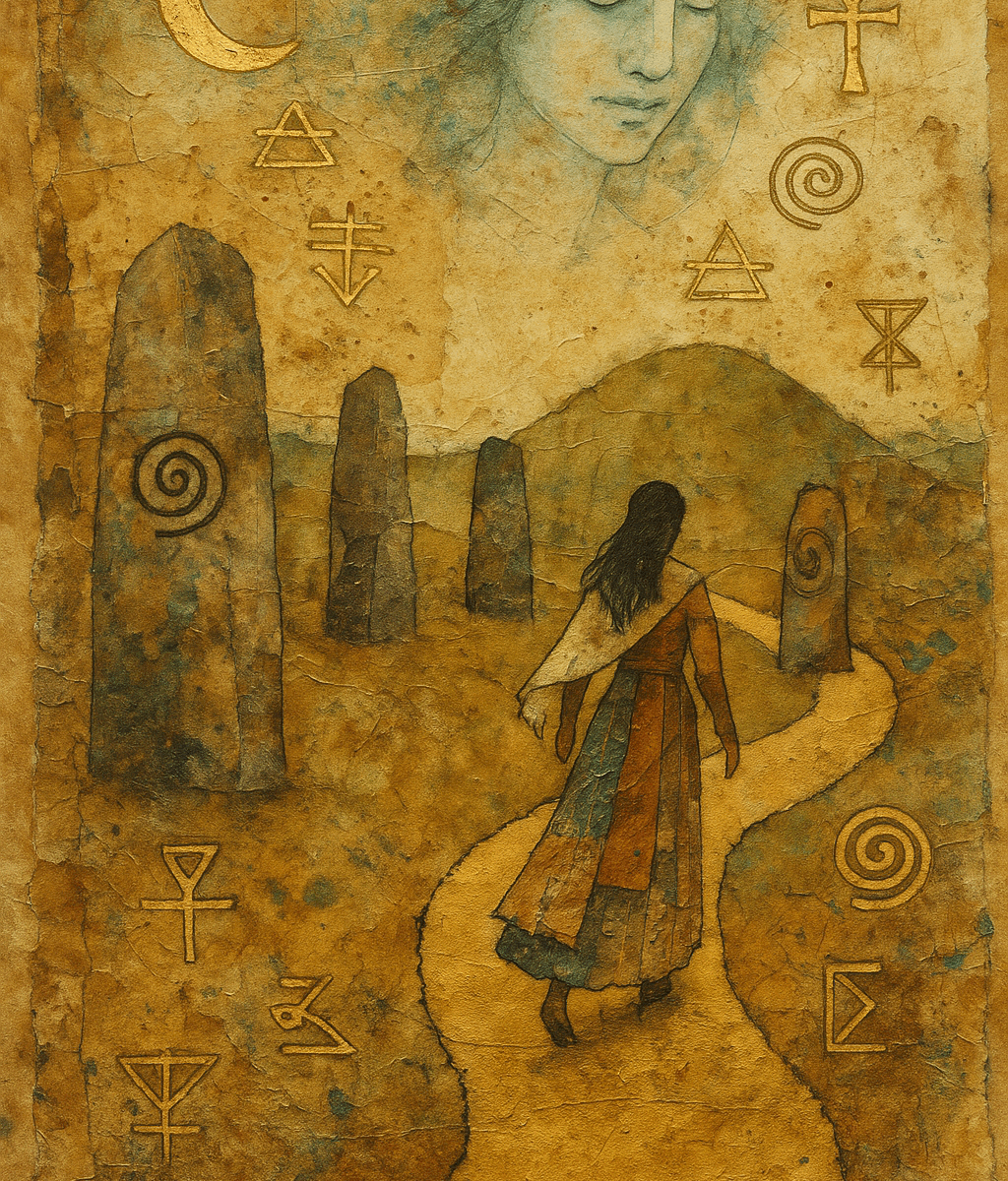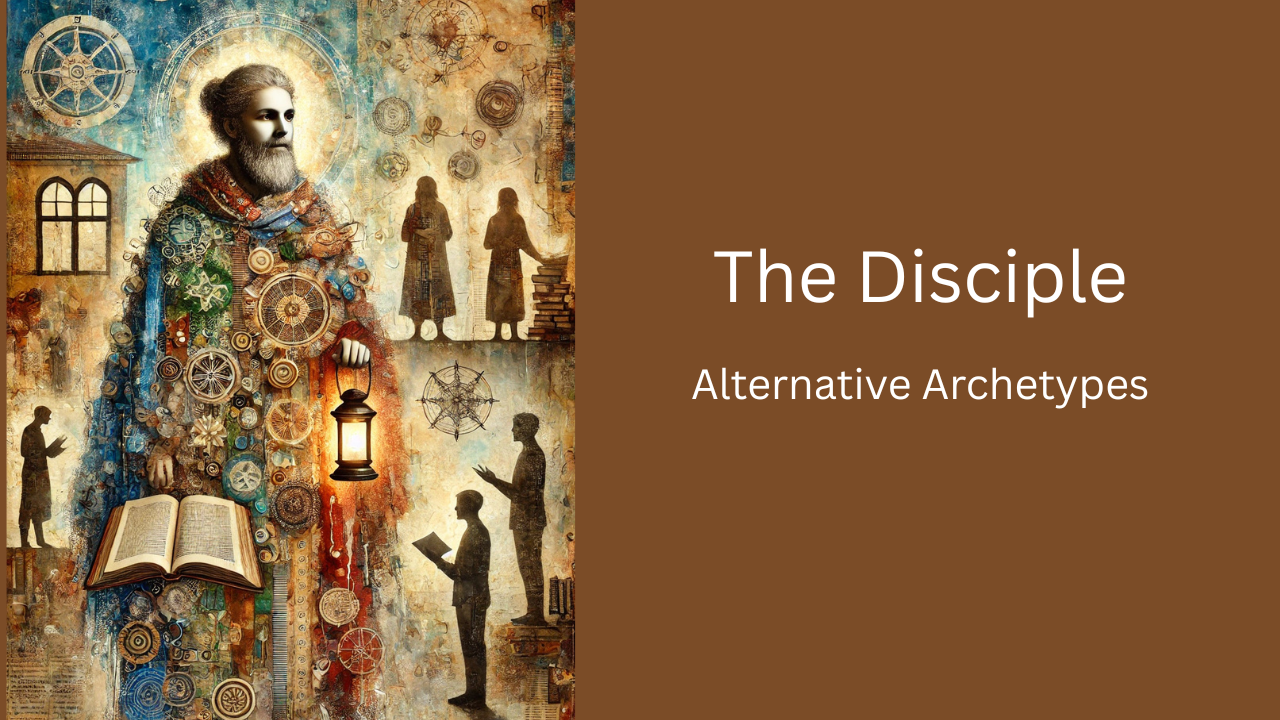In a world marked by division, the Peacemaker archetype reminds us of the quiet strength found in compassion and dialogue. Rooted in the Community & Connection pathway of the Alternative Archetypes, Peacemakers heal rifts and restore trust. They mediate conflict not through dominance, but through deep listening and fairness. Yet they must also guard against losing their own voice in pursuit of harmony. The Peacemaker invites us to ask: what relationships in our lives need reconciliation? What bridges are waiting to be built? Explore this archetype and rediscover the transformative power of empathy.
The Mediator
The Mediator alternative archetype reminds us that peace is not the absence of conflict but the presence of understanding. With empathy, neutrality, and patience, Mediators help others find common ground and rebuild trust. Yet their challenge lies in maintaining self-care and conviction while fostering unity. In a divided world, their gift of bridge-building is both essential and profoundly healing.
Reflection prompts
- What helps you stay grounded when mediating conflict?
- How might communities change if more people adopted a Mediator’s mindset?
Read the full archetype description here
Catch every post.
Subscribe to the monthly roundup so you never miss a blog or book review.
Introducing the Community & Connection path
The Community & Connection alternative archetypes embody the deep human need for belonging, cooperation, and shared purpose. These figures serve as the architects of relationships, ensuring that people not only coexist but thrive together. They create bridges where there are divides, structure where there is chaos, and meaning where there is fragmentation.
In a world where digital interactions often replace genuine connection, and social and ideological divides grow deeper, these archetypes remind us that community is an active process. They show us that true belonging is cultivated through intention, communication, and shared experiences.
The Archetypes (coming soon)
Each of the following archetypes represents a different phase in building and maintaining community:
- The Webster – A weaver of human relationships, strengthening the social fabric by connecting individuals and fostering networks of mutual support.
- The Mediator – A neutral presence who facilitates communication, helping others navigate conflict and find common ground.
- The Peacemaker – A harmony-seeker who works to restore balance and reconciliation in relationships and groups.
- The Organiser – The practical force that transforms ideas into reality, ensuring that collective efforts are structured and effective.
- The Ritualist – A guardian of sacred traditions who helps communities find meaning and continuity through shared rituals and ceremonies.
Discover more in the video below
Find out more about the Alternative Archetypes here
The Guide
Continuing the series of Alternative Archetypes, meet The Guide archetype who serves as a calm and steady presence in a chaotic world- offering direction without dominance, clarity without control. Rooted in humility, Guides walk alongside others, helping them discern their way forward. They draw on lived experience, frameworks, and deep listening to empower people to navigate complexity with confidence. In contrast to healers or changemakers, Guides focus not on fixing or leading, but on equipping others to find their own way. Whether through coaching, parenting, mentoring, or community work, Guides bring tools, insight, and compassionate questioning. Their light shines brightest when they remain in the background- fostering growth, independence, and resilience. In today’s world of overload and overwhelm, the Guide’s gifts are more needed than ever.
Watch the extended video for a more in-depth look at this archetype, including insights that go beyond the written page.
The Healing & Service pathway
The Healing & Service-Oriented archetypes embody the human impulse to support, guide, and restore balance – whether through personal healing, community service, or the transformation of collective wounds. These archetypes remind us that healing is not only about curing ailments but about fostering wholeness in ourselves, others, and the world. They work in different ways, from the deeply personal journey of the Wounded Healer to the broad social vision of the Egalitarian.
Find out more about this pathway
Stay Connected to the Journey
Don’t miss a single archetype.
Sign up for the Alternative Archetypes monthly newsletter and unlock our free Wisdom and Insight archetypes guide – a beautifully illustrated gateway to the archetypes of intuition, insight, and inner light.
Each month you will receive:
- A round-up of the newly released cards
- Insights into the meaning behind each archetype
- Reflections and philosophy from the heart of the project
Introducing a New Archetype: The Medicine Person
I’m thrilled to unveil the latest addition to the Alternative Archetypes series: The Medicine Person -a figure of ancient wisdom reborn for modern times.
In cultures around the world, medicine people have long served as healers, seers, and spiritual guides – those who walk between the worlds to restore harmony where there is fragmentation. The Medicine Person archetype emerges not only in shamans and traditional healers, but in anyone who brings soul-level care to their community, weaving together emotional, spiritual, ecological, and physical wellbeing.
At a time when so many are experiencing burnout, disconnection, and imbalance, this archetype reminds us that healing is not a solo journey. It is a relational, reciprocal process rooted in reverence – for nature, for spirit, for community, and for the unseen web that connects us all.
This archetype is part of the Healing & Service Path and calls forth qualities like compassion, presence, ritual wisdom, and integrity. You might see the Medicine Person in a hospice nurse, a forest therapy guide, a community elder, or a trauma-informed coach. Their tools vary – but their essence is the same: to bring wholeness where there is hurt, and to honour the sacred in the everyday.
Want to go deeper? Explore the full archetype description, including a soulful video that brings the Medicine Person to life.
Tapping into the Soul’s Language
Reclaiming story, symbol, and soul in a world of literal thinking
What if your life isn’t a problem to be solved- but a story to be lived?
In a culture that prizes clarity, logic, and step-by-step plans, it can feel almost radical to speak in metaphor, to think in symbols, or to make meaning through poetry. Yet for many of us on a soulful path to life purpose, imagination isn’t a luxury. It’s a necessity.
Welcome to the realm of mythopoetic imagination -the soul’s native language.
What Is Mythopoetic Imagination?
The term “mythopoetic” joins two powerful forces: mythos, the deep stories and symbols that shape cultures and individuals, and poiesis, the creative act of making. Mythopoetic imagination is the capacity to see your life not in terms of tasks and timelines, but in terms of story, metaphor, and soulful meaning.
It’s a way of seeing the world symbolically. A way of listening inwardly for the myth that is trying to live through you. Not the myth society hands you, but the one that fits the shape of your soul.
The Loss of Soul Language
Many of us have been trained to dismiss this kind of imagination. It’s been filed under “childish,” “unrealistic,” or “unproductive.” But this disconnection from imagination comes at a cost. Without it, we lose our ability to:
- Interpret inner experiences symbolically
- Recognize the soul’s longings
- See beyond surface appearances
We flatten our lives into lists and labels, forgetting that we are storied beings. And as psychologist James Hillman reminds us, the soul doesn’t speak in bullet points. It speaks in image, mood, symbol, dream, and story.
Living a Mythopoetic Life
To live mythopoetically is not to escape reality – it is to deepen into it.
It’s to ask:
- What story am I currently living?
- What archetype or inner figure is active in me right now?
- What does this longing, dream, or crisis want to teach me rather than fix?
When we shift into this mode of perception, challenges become initiations. Despair becomes descent. Breakdowns become thresholds.
This is not magical thinking. It is symbolic thinking – an older, wilder way of understanding ourselves and the world.
Imagination and Life Purpose
So how does this connect with life purpose?
Purpose is often framed as a career goal or long-term plan. But the soul rarely moves in straight lines. It curves, circles, and spirals. Purpose, in this deeper sense, is not something you achieve but something you live into – by listening to what is unfolding and allowing it to change you.
Mythopoetic imagination helps us:
- Hear the soul’s whispers amid daily noise
- Recognize archetypes and symbols as signposts
- Make meaning of difficulty, transition, or longing
- Create a story of self that is rich, rooted, and real
Archetypes as Story-Carriers
Alternative Archetypes often show up as guides within our personal myths. The Seeker, The Mystic, The Wounded Healer, The Visionary – these are more than concepts. They’re living energies that call us into new chapters of ourselves.
Not all of the Alternative Archetypes I’ve developed have been released yet, but each one is designed to act as a mirror, a mythic figure that helps you recognize an inner pattern trying to emerge.
When you resonate with one, it’s often a sign that your soul is speaking: This is the story I’m trying to live.
And that story deserves to be heard.
Practices for Awakening the Mythopoetic Imagination
You don’t need to be a poet or a mystic to work this way. You only need to be willing to listen differently.
Here are a few simple ways to reconnect with the soul’s language:
1. Keep a Symbol Journal
Write down images or themes that appear in your dreams, art, or passing thoughts. Look for patterns or figures that return.
2. Rewrite Your Biography as a Myth
Imagine your life as a mythic tale. What were your thresholds? Who were the helpers and adversaries? What powers have you been learning to claim?
3. Dialogue with an Archetype
Choose one that intrigues or unsettles you. Ask it what it wants you to know. What chapter of your life might it be calling you into?
4. Make Soul Collage or Visual Maps
Gather images intuitively. Don’t aim for logic. Let the symbolic and aesthetic lead the way. Later, reflect on what story is emerging.
5. Walk with a Question
Take a question for a walk in nature or your neighbourhood. Let metaphors find you: a bird on a wire, a winding path, a broken gate. Ask yourself what the image is saying about your life.
A Different Kind of Knowing
Mythopoetic imagination doesn’t replace logic or action. But it complements them with depth.
It’s the kind of knowing that doesn’t arrive through thinking harder—but through sensing, dreaming, creating, and listening differently. It reminds us that the soul speaks in symbol, that purpose is poetic, and that imagination is not an escape – but a way home.
An Invitation
If something within you stirs at the sound of these words, pay attention. That stirring is the soul’s language.
You are not here to live someone else’s story. You are here to honour the myth that lives in you – and to live it with courage, creativity, and care.
Let imagination lead you.
Let symbol accompany you.
And trust that the story you are living… is sacred.
🔍 Explore the Alternative Archetypes
If you’re drawn to these ideas, I invite you to visit the Alternative Archetypes page which is the portal into the whole project. These mythic figures are companions for the inner journey – reflecting back the deeper truths and patterns of your evolving self.
Archetypal Psychology and the Inner Landscape
Gaining A Deeper Way of Understanding Who We Are
Have you ever felt like there are patterns within you – recurring themes, images, or roles – that keep showing up throughout your life, even if you can’t always name them?
Archetypal psychology invites us to see these inner patterns not as flaws or quirks to fix, but as deeply meaningful expressions of soul. At its heart, this approach asks a profound question: What if your inner life has a symbolic shape? And what if that shape isn’t random – but is trying to tell you something essential about who you are?
In this post, we’ll explore how archetypal psychology offers a soulful lens for understanding your inner landscape – and how it connects to the idea of walking a purposeful path.
Prefer to watch or listen? This short video brings the ideas in this post to life.
Seeing with Soul Eyes
Much of modern psychology focuses on problem-solving. Archetypal psychology, first named by James Hillman, turns that on its head. It doesn’t ask, “How do we fix the self?” but instead, “How do we listen to the soul’s imagery?”
This approach draws on the legacy of Carl Jung, who believed we are shaped not just by family and society, but by archetypes – universal symbolic patterns that live in the collective unconscious. The Lover, the Warrior, the Sage, the Trickster- these are not just characters in stories. They’re active within us, colouring how we see the world and how we live our lives.
But Hillman took it further. He said we should stay close to image. To metaphor. To the poetry of the psyche. Rather than reducing our experiences to neat categories, we’re invited to let them remain rich, ambiguous, and mysterious. Because that’s how the soul speaks.
Archetypes as Soul Invitations
In response to the world we find ourselves in today, I’ve developed a series of Alternative Archetypes – soulful companions for those walking the path to purpose. These aren’t fixed roles you must grow into. They’re invitations. Mirrors. Patterns that help illuminate your unique way of moving through the world.
You might resonate with The Seeker, always drawn toward what lies beyond the horizon. Or The Truthteller, compelled to speak what others are afraid to say. You might feel a pull toward The Gardener – tending life quietly, persistently, in your corner of the world.
Not all of these archetypes have been made public yet. But even if you’ve only seen a few, you might already sense the power in having names for the deep inner energies that shape you.
These archetypes aren’t prescriptions. They’re descriptive: they help give language to the forces that already live within you.
The Inner Landscape as Mythic Terrain
One of the most powerful ideas in archetypal psychology is that your inner life is a landscape. Not a blank slate to be organized – but a wild, symbolic place to be explored.
In this terrain, you might meet:
- The Wilderness Dweller, who thrives on solitude and insight.
- The Spinster, who chooses sovereignty and soul over societal norms.
- The Visionary, who dreams a new world into being.
These are just some of the soul figures who may walk alongside you. And the terrain itself is shaped by your longings, wounds, patterns, and gifts.
When we begin to map this inner terrain, we stop asking “What’s wrong with me?” and begin asking “What story am I in?” or “Which archetype is stirring now?”
Why It Matters
Understanding your life through the lens of archetypes changes everything. It brings a deeper layer of meaning to your experiences. It helps you see the cyclical nature of growth – not as linear progress, but as a spiral path. And it allows you to meet yourself with more curiosity, compassion, and creativity.
You are not a machine to be optimized. You are a soul with a symbolic life.
An Invitation
If you’re curious, here are a few simple ways to begin exploring your own inner landscape:
- Notice recurring themes in your life story. Is there a role you’ve always found yourself in?
- Track your dreams or daydreams. What kinds of figures show up? What symbols?
- Choose an archetype from the ones that have been shared so far and reflect: How does this energy live in me? How might it be guiding me right now?
The soul doesn’t usually speak in bullet points or deadlines. It speaks in images, patterns, and longings. Archetypal psychology helps us translate those whispers into meaning.
And in that meaning, we often find our next step.
🌿 Explore the Alternative Archetypes
If this idea resonates with you, I invite you to visit the – a growing collection of symbolic guides designed to help you connect with your inner landscape. Each archetype offers a unique lens on purpose, depth, and soulful living. New archetypes are being added regularly, so feel free to return and explore what’s unfolding.
Because your soul has many faces. And each one may hold a key to who you’re becoming.
The Soul Guide
A Companion on the Inner Journey
Have you ever felt there’s a deeper presence within you- something wiser, quieter, more enduring than your everyday self?
In the mythic imagination, this presence is sometimes called the soul guide. You might know it as your intuition, inner knowing, or even a daimon, to borrow the ancient Greek word for the personal spirit that accompanies each of us. It’s not loud or commanding. It doesn’t push or demand. But if you listen closely, it whispers a path.
In this second article in the Soulful Path series, I want to explore the idea of this inner guide – not as a fixed entity, but as a companion who evolves alongside us, helping us to live in greater alignment with who we really are.
Prefer to watch rather than read? Check out the video below.
What Is the Soul Guide?
The soul guide is not a guru or external authority. It’s an inner archetype – a symbol of the part of you that seeks wholeness, wisdom, and authenticity. In many traditions, this guide has appeared in different forms: a spirit animal, an ancestral presence, a wise elder, or even a future version of yourself calling you forward.
Psychologist James Hillman described the daimon as the unique pattern that shapes a person’s calling. It’s the inner thread that weaves meaning through our life, even when we can’t see it clearly.
In coaching, I sometimes notice when someone begins to shift from searching outside themselves to listening inward. They move from “What should I do?” to “What is life asking of me?” That’s the moment when the soul guide begins to stir.
Meeting the Guide
We don’t usually “meet” the soul guide in dramatic moments. More often, it’s in the pauses – the quiet walks, the journals filled with questions, the dreams we almost forget. It might speak in images, metaphors, or persistent longings. It shows up when something inside says, This matters. This feels true.
Why It Matters
In a noisy world full of expert advice and five-step plans, it can feel radical to say: You already have a guide. But this is at the heart of a soulful approach to life purpose. The soul guide doesn’t hand us a masterplan. Instead, it asks us to walk with presence, to live the questions, and to honour what is most alive in us.
When we learn to listen, we stop chasing clarity and start cultivating connection. We begin to trust that there’s a deeper intelligence in the unfolding of our lives.
And we realise: we were never walking alone.
Archetypes as the Language of the Soul
The soul guide doesn’t always speak in words. Often, it speaks in images, longings, and symbolic patterns– what we might call archetypes.
I’ve developed a set of Alternative Archetypes to reflect the kinds of deep, soulful roles that often emerge on the path to purpose. These aren’t fixed labels or boxes – they’re invitations. They represent the many ways the soul guide might show up in your life: as the Mentor, the Seeker, the Artist, or the Wounded Healer.
You might think of the soul guide as an inner companion – and the archetypes as the many faces it wears to help you hear its call.
When one of these archetypes resonates deeply with you, it may be your soul’s way of saying: Pay attention. There’s something here for you.
Reconnecting with The Disciple
A Deeper Exploration
A few weeks ago, I shared a blog post introducing The Disciple —one of the Alternative Archetypes from my ongoing project exploring soulful, meaningful ways of being in the world.
Since then, I’ve created a short video offering a deeper dive into this archetype. In it, I expand on the themes I touched on in the blog post.
Sometimes hearing it spoken aloud, or experiencing it in a different medium, can spark fresh insights.
✨ You can watch the video below—and if you missed the original blog post, you’ll find it here.
If the archetype resonates with you, I’d love to hear what aspects stood out—or how you see it showing up in your life. Feel free to leave a comment or share your thoughts.
Stay Connected to the Journey
Don’t miss a single archetype.
Sign up for the Alternative Archetypes monthly newsletter and unlock our free Wisdom and Insight archetypes guide – a beautifully illustrated gateway to the archetypes of intuition, insight, and inner light.
Each month you will receive:
- A round-up of the newly released cards
- Insights into the meaning behind each archetype
- Reflections and philosophy from the heart of the project
The Poet
The second in the Creative & Expressive pathway in the Alternative Archetypes project, The Poet archetype brings soulful expression to life, transforming emotion into eloquent language. Sensitive and perceptive, they help us reconnect with beauty, meaning, and shared humanity in a fragmented world.

